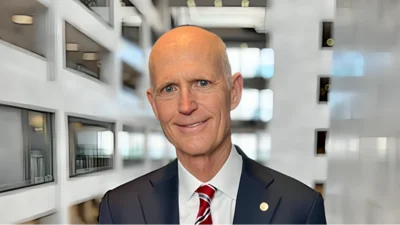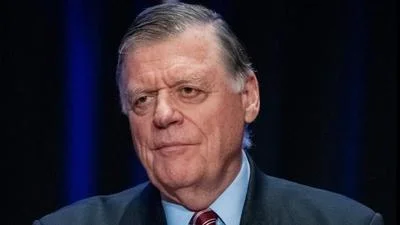Mr. President. Last Thursday, I wrote Secretary Geithner asking why the Treasury Department allowed General Motors to use TARP money from a Treasury escrow account to repay its multi-billion dollar TARP taxpayer loan. This afternoon, I received a response from Treasury. I’d like to say a few words about the reply and the questions that remain unanswered. Last week, Treasury and GM announced with press releases and nationwide TV commercials that GM had repaid its TARP loans “in full, with interest, ahead of schedule, because more customers are buying [GM vehicles]."
However, the hype does not match the reality. Taxpayers have not been repaid in full-far from it. Many billions of TARP dollars remain invested by Treasury in GM, and much of it will never be repaid. The Congressional Budget Office estimates that taxpayers will lose around $30 billion on GM. In addition, the payment that occurred last week did not come from revenue GM earned by selling cars, despite what was claimed. Instead, Treasury allowed GM to use funds in a separate escrow account to pay its TARP debt. The Treasury Department’s response to me today makes a point of saying that GM “owns" the money in the escrow account, as if that somehow justifies all the hoopla about GM’s so-called “repayment."
Well, let’s look at how GM came to “own" those escrow funds in the first place. The escrow funds were part of the TARP money Treasury paid for GM stock coming out of the bankruptcy. The money was supposed to be used by GM for expenses, as Treasury concedes. Treasury had the power to approve or disapprove GM’s use of the money to repay the TARP taxpayer loan. Treasury approved, and GM pretended it was paying the loan back from revenue because business had improved. Business may have improved, but that’s not how they paid the loan. Taking TARP money out of one account to pay back TARP loans in another account is not at all the same as paying off a loan with earnings, as GM’s TV commercials imply they have done. That is why I called it “an elaborate TARP money shuffle" and nothing in Treasury’s reply today changes that.
The public would know nothing about the TARP escrow money being the source of the supposed repayment from simply watching GM’s TV commercials or reading Treasury’s press release. Treasury’s letter today says all these details are public knowledge and nothing new. Well, that may be technically correct, but it wasn’t clearly communicated that way to the average citizen. Most Americans don’t pore through SEC filings and Special Inspector General’s reports.
The GM commercial also did not mention that GM could have used the TARP escrow funds to repay a $2.5 billion, nine-percent loan it received from its union health plan as part of the bankruptcy process. The union loan runs until 2017. The TARP loan was at seven percent and ran until 2015. What sort of money manager would advise you to pay off a lower interest loan before a higher interest loan? GM and Treasury have still not explained that, and I have asked the TARP watchdog, Special Inspector Neil Barofsky, to get to the bottom of it. And to make matters worse, Treasury has admitted that it let GM take an additional $6.6 billion of TARP dollars out of the escrow fund last week with no strings attached. That money, too, could have been used to repay the high interest union loan.
There are reports that GM also applied to the Department of Energy for a $10 billion, five-percent loan to retool its plants to meet fuel economy standards. GM seems to be using government money to pay back government money, and then asking for more government money at a lower interest rate. It sounds like a plan to refinance GM's government debt with more taxpayer money--not pay it back.
GM had to ask permission from Treasury to use the taxpayers’ stock investment to pay off the taxpayers’ loan. Treasury’s response to my letter says that “Treasury retained approval rights over GMs use of funds from the escrow account in order to protect the taxpayer." Well, why didn’t they protect the taxpayer then? Why would Treasury allow GM to use its equity investment to pay off the loan when it means giving up the legal right to a seven percent rate of return for the taxpayers in exchange for essentially nothing? Since the taxpayer has an equity stake in the company, it’s true that future growth of GM could theoretically make taxpayers whole, but taxpayers already had that equity interest before this latest transaction and didn’t get any more equity as a result of the transaction.
Another key question is why would GM orchestrate a major media campaign to make the public think this all represents some big accomplishment by GM when the truth is that the taxpayers are still on the hook for billions that we may never recover? Using the taxpayers’ stock investment in GM to reduce its debt to the taxpayers is not the same as repaying that debt from money actually earned by selling cars. Treasury’s reply today does not explain why it approved this transaction. Maybe it’s a step in the right direction, maybe not. But, instead of misleading the American people, we should be clear and up front about what happened here.









